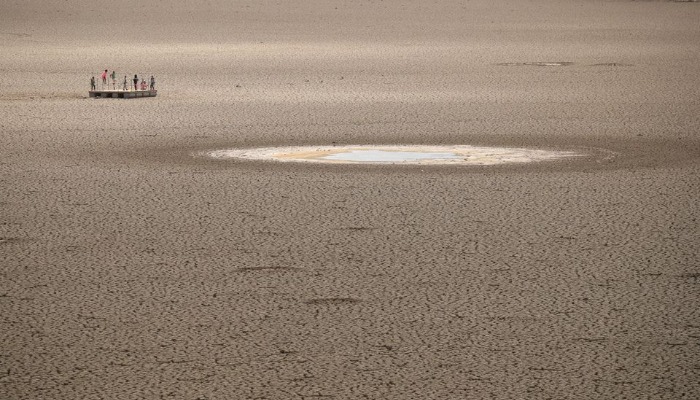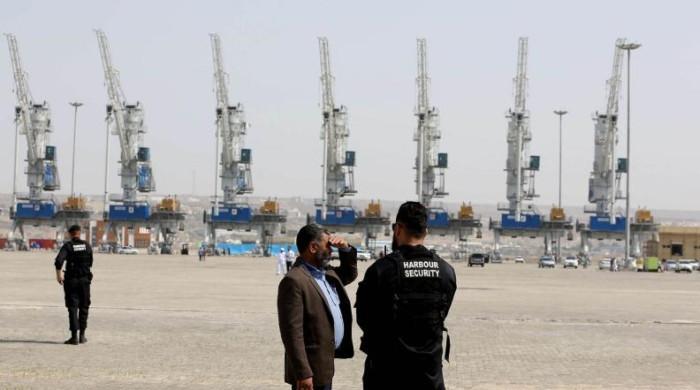Natural disasters have increased by five times in past five decades: UN report
Climate and weather-related disasters accounted for 50% of all prominent disasters since 1970
September 03, 2021

- More than 11,000 climate-related disasters globally, with more than 91% of the deaths occurring in developing countries.
- "Climate and water extremes will become more frequent and severe in many parts of the world," WMO Secretary-General said.
- Need for greater investment in comprehensive disaster risk management, says UNDRR head.
The number of deadly natural disasters, such as droughts, tsunamis, hurricanes and earthquakes, have increased fivefold over the past 50 years with 2 million deaths and $3.64 trillion in economic losses being reported, stated a UN agency.
According to a report published by the World Meteorological Organization (WMO) and United Nations Office for Disaster Risk Reduction (UNDRR), climate and weather-related disasters accounted for 50% of all noted disaster events on Earth since 1970.
The report further stated that 45% of all reported deaths and 74% of the economic losses in the past five decades were caused by climate and weather-related disasters — a majority of which occurred in developing countries.
Read More: Developing world faces debt crisis because of coronavirus: UN chief Antonio Guterres
However, thanks to increasingly efficient warning systems, the number of deaths as a result of disasters has decreased almost three-fold between 1970 and 2019 — down to just 20,000 lives lost during the 2010s.
According to the agencies' publication, Atlas of Mortality and Economic Losses from Weather, Climate and Water Extremes, from 1970 to 2019, natural hazards accounted for 50% of all disasters, 45% of all reported deaths and 74% of all reported economic losses.
There were more than 11,000 reported disasters attributed to natural hazards globally, with more than 91% of the deaths occurring in developing countries.
The report further added that from 1970 to 2019, Asia recorded 3,454 disasters, with 975,622 lives lost and $2 trillion in economic damages.
Asia accounts for nearly 31% of weather, climate, and water-related disasters globally, for nearly 50% of all deaths and one-third of the associated economic losses.
“Economic losses are mounting as exposure increases. But, behind the stark statistics, lies a message of hope. Improved multi-hazard early warning systems have led to a significant reduction in mortality. Quite simply, we are better than ever before at saving lives," WMO Secretary-General Petteri Taalas said in a statement.
Of the top 10 disasters, droughts proved to be the deadliest hazard, causing 650,000 deaths, followed by storms that led to 577,232 deaths.
Storms were followed by floods, which took 58,700 lives, and extreme temperature events led to 55,736 deaths.
Read More: 170 dead in Germany and Belgium floods
Severe economic losses due to storms
On the other hand, economic losses have increased sevenfold from the 1970s to the 2010s, going from an average of $49 million to a whopping $383 million per day globally.
Storms, the most prevalent cause of damage, resulted in the largest economic losses around the globe.
All hurricanes that occurred in 2017 are considered the costliest disasters, accounting for 35% of total economic losses around the world from 1970 to 2019.
In the US, Hurricane Harvey caused $96.9 billion in damage, Maria in the Caribbean caused $69.4 billion, and Irma caused $58.2 billion in Cape Verde.
Climate and weather extremes to increase
“The number of weather, climate and water extremes are increasing and will become more frequent and severe in many parts of the world as a result of climate change”, WMO Sec-General added.
“That means more heatwaves, drought and forest fires such as those we have observed recently in Europe and North America”.
Read More: Four days on, Turkey continues to battle forest fires
Talaas further stated that more water vapour in the atmosphere has exacerbated extreme rainfall and flooding, and the warming oceans have affected the frequency and extent of the most intense tropical storms.
WMO cited peer-reviewed studies in the Bulletin of the American Meteorological Society, showing that over the period 2015 to 2017, 62 of the 77 events reported, revealed a major human influence at play.
Moreover, the probability of heatwaves has been significantly increased due to human activity, according to several studies done since 2015.
The Atlas clarified that the attribution of drought events to anthropogenic, or human factors, is not as clear as for heatwaves because of natural variability caused by large oceanic and atmospheric oscillations, such as the El Niño climate patterns.
However, the 2016-2017 East African drought was strongly influenced by warm sea-surface temperatures in the western Indian Ocean which human influence contributed to.
Climate change has also increased extreme sea-level events associated with some tropical cyclones, which have increased the intensity of other extreme events such as flooding and associated impacts.
This has augmented the vulnerability of low-lying megacities, deltas, coasts and islands in many parts of the world.
Read More: Millions at risk as many cities fail to adapt to climate change: report
Moreover, an increasing number of studies are also finding human influence exacerbating extreme rainfall events, sometimes in conjunction with other major climate influences.
Examples include the extreme rainfall in eastern China in June and July 2016 and Hurricane Harvey, which hit Houston in 2017.
Early warning systems and recommendations
The report further stated that only half of WMO’s 193 member countries have multi-hazard early warning systems. While severe gaps in weather and hydrological observing networks exist in Africa, some parts of Latin America and in the Pacific and Caribbean island States.
“More lives are being saved thanks to early warning systems, but it is also true that the number of people exposed to disaster risk is increasing due to population growth in hazard-exposed areas and the growing intensity and frequency of weather events," Mami Mizutori, UN Special Representative and heads of UNDRR said.
Mizutori added that international cooperation is needed to tackle the chronic problem of huge numbers of people being displaced each year by floods, storms, and drought.
Read More: Hundreds of families homeless as Greek fires rage, rain saves Turkey
Mizutori called for greater investment in comprehensive disaster risk management to ensure that climate change adaptation is integrated into national and local disaster risk reduction strategies.
The UNDRR head warned that the failure to reduce disasters losses is putting at risk the ability of developing countries to eradicate poverty and to achieve the Sustainable Development Goals (SDGs).
The Atlas further recommends countries to review hazard exposure and vulnerability in consideration of a changing climate to reflect tropical cyclones that may have different tracks, intensity, and speeds than in the past.
The report also calls for the development of integrated and proactive policies on slow-onset disasters such as drought.











